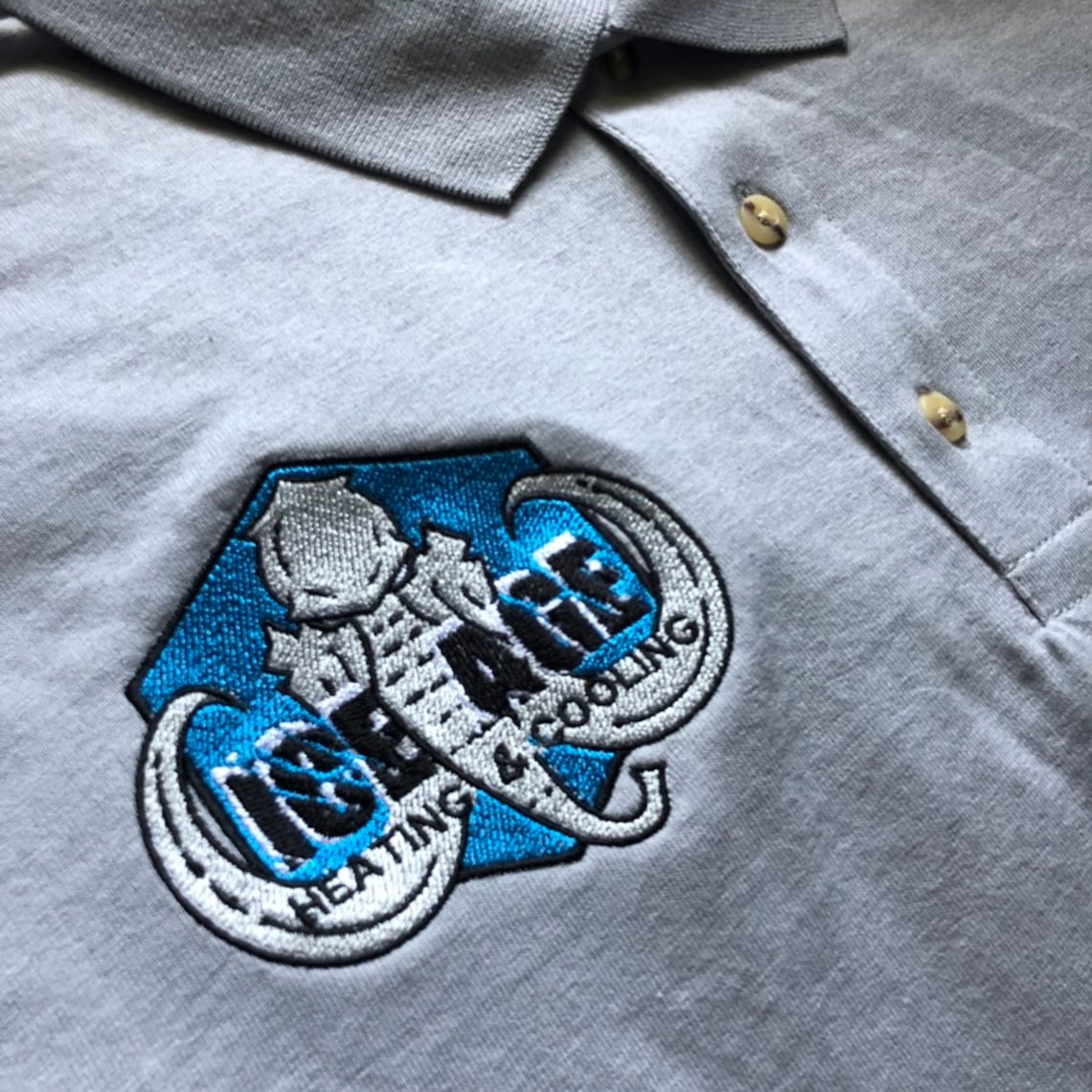

Very thin elements can also present difficulties for printing, depending upon the type and the apparel chosen. They can be standard fill or a ‘structured’ fill (such as to replicate the look of feathers in the sample). When there is a large area to be embroidered, we use fill stitches. The letter “I” made with running stitches might have only 20 stitches, while the satin stitch version might have several hundred. A stitch is placed at the very bottom of the letter, then the next stitch is directly above the first, the next is above that, and so on the top of the letter. In the example of a capital “I”, instead of forming the letter by going back and forth (left to right) across the letter many times (satin stitches), running stitches are placed one above the other.

If thin elements are necessary, other (less beautiful than satin) stitches such as running stitches can be used. The left to right distance across a thin “I” is too small and both stitches fall into the same area of the fabric and result in a hole in the fabric. If the letters are very thin, we can’t use satin stitches. It’s the best and most beautiful way to embroider things such as letters. gradually moving up or down the letter to create what we call satin (or column) stitches. Back and forth… left, right, left, right, left, right, etc. For example, when we embroider our logo, the capital letter “I” is stitched by the needle going through the fabric on the left side of the letter (the bobbin thread forms a lock stitch with the top thread while the needle is in the ‘down’ position), pulling out of the fabric and moving to the right side of the letter where the needle once again goes through the fabric, a lock stitch is formed underneath by the bobbin thread, then the needle pulls out and moves back to the left side of the letter a little higher or lower that the first stitch. This stitch goes back-and-forth across the entire width of the area to be embroidered. In lettering, for instance, we typically use the satin stitch. Embroidery has trouble duplicating the look of thin elements in logos because of the type of stitch that can be used.
#Embroidery my logo full#
For an adult full back or full front logo, up to 12″ wide and 14″ in height. For a youth-size full back or front logo, up to 10″ x 10″. Left chest: Up to 4.5″ x 4.5″, but the size recommendations for embroidery hold true here. If we think something needs to be changed, we’ll let you know. Sending one smaller might be a problem, since we need to enlarge it for digitizing. Don’t worry about sending us a larger logo than these guidelines – larger is better for digitizing. Often, the limiting factor in a logo’s size is small lettering or a thin, small part of the artwork. Full back logos (we only recommend putting them on materials no lighter than a sweatshirt) up to 11″ x 11″. For caps, 2.25″ tall and 4″ wide are size limits, and 1 to 1.25″ tall and 4″ wide for visors. If the logo is square, 1.5 to 2″ on a side, and 2 to 2.5″ in diameter for circular logos. Our general guidelines are 3 to 3.75″ wide for logos wider than they are tall for embroidered use on the left chest of shirts. SCREEN PRINTING: Not the best choice for blended colors becasue we use spot color for screen printing. Our advice is to not use blended colors at all if you don’t need them for embroidery or screen printing of your logo design. A large logo (such as to go on the back of a jacket) could look better as embroidery, but embroidery won’t be able to duplicate the look that can be achieved on paper or on your computer screen. If a blended logo is critical for you, then full color printing is the way to go. It’s hard to embroider a blended color well, especially in a small digital logo. While printing simply adjusts the dots of ink on the page or pixels on the computer monitor, embroidery has to try to accomplish this with segments of thread. This might look fine on paper, but is very difficult to accomplish in a small, left chest or cap size logo. Many professionally designed logos have blended colors or a transition from one color to another. Years of experience in the industry has given us some insight into what does and doesn’t work well. We’ve broken the thoughts down into the following areas: COLOR BLENDING: EMBROIDERY: If you prefer to create your own logo, we have some suggested guidelines to follow for creating a logo that translates well to embroidery, screen printing, and full color printing. You may want to hire a company that will design a custom logo that will work well in a wide range of formats, to include embroidery.


 0 kommentar(er)
0 kommentar(er)
